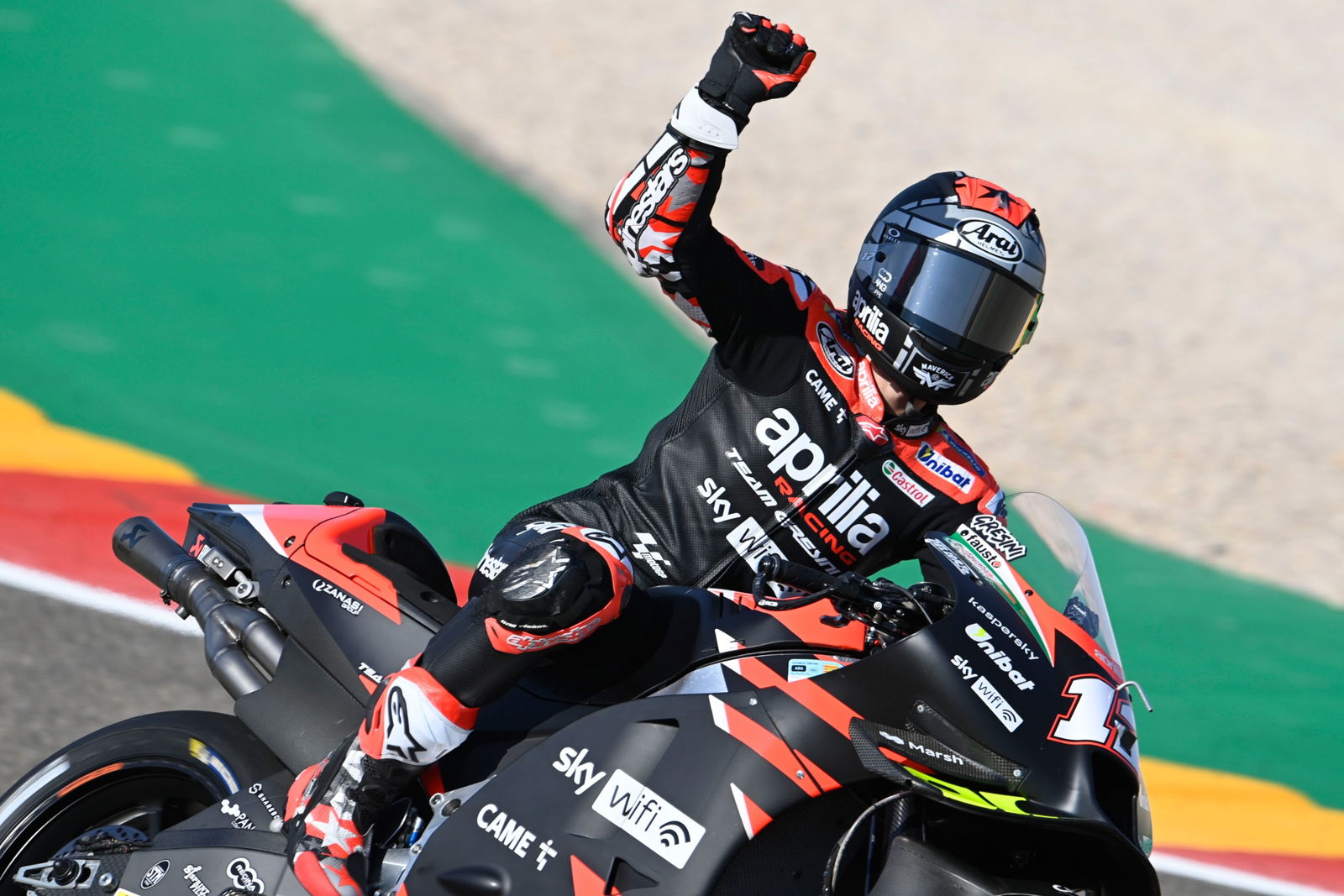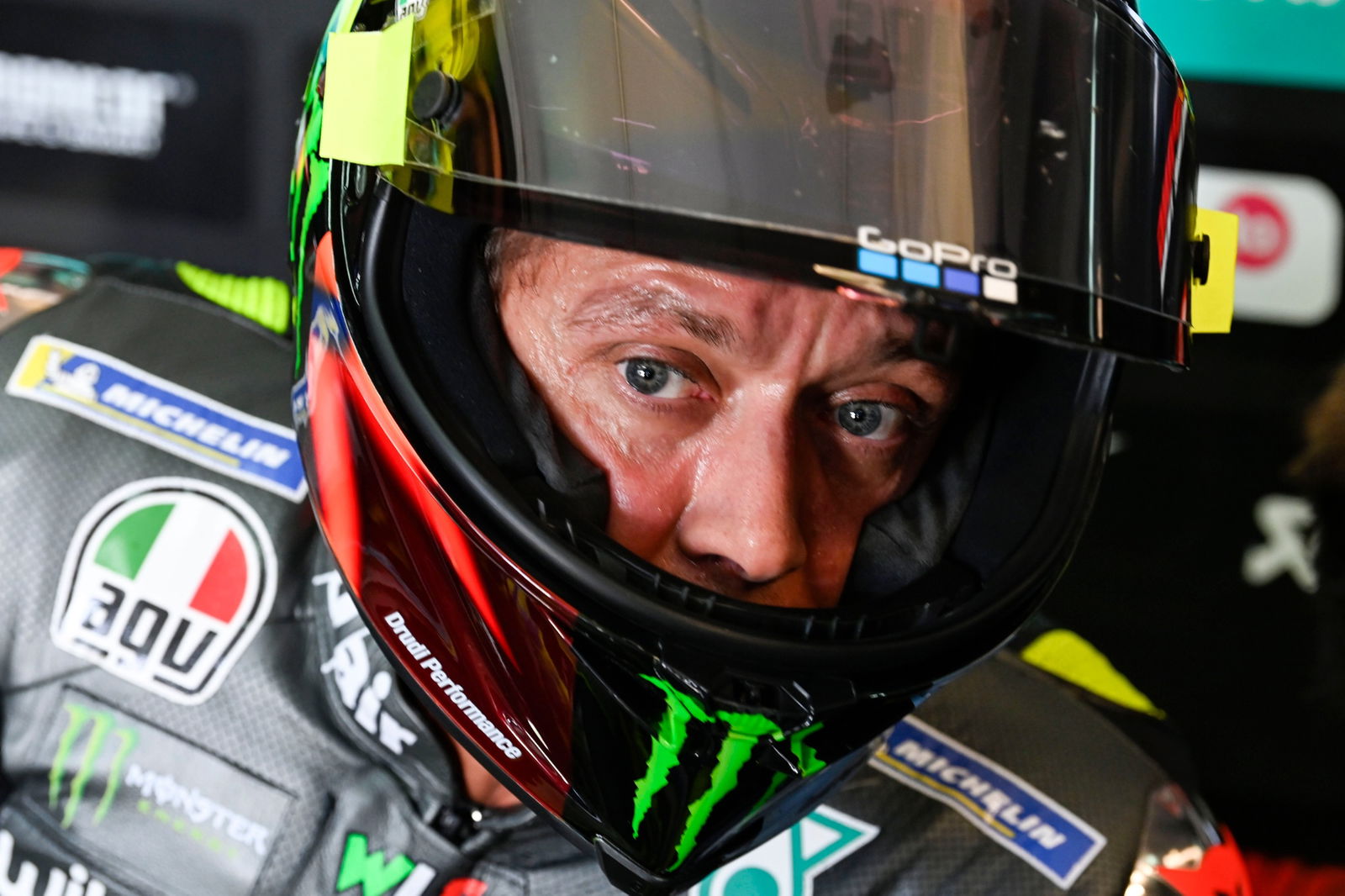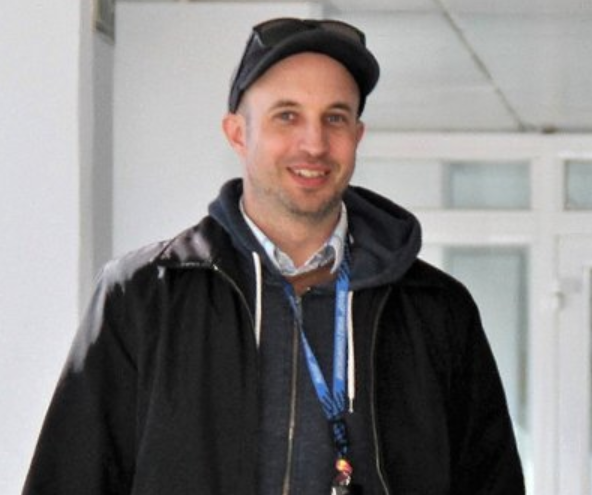Aleix prefers 'manual' over 'automatic' Aprilia ride-height system at Aragon

MotoGP rear ride-height systems have already morphed from one-off use at the start of a race to being repeatedly activated under hard acceleration onto long straights.
But the most advanced systems are now starting to go from 'manual' to 'automatic'.
The manual systems – still in use by most teams - instantly lower the bike whenever the rider pulls a lever on the exit of a corner (then reset under hard braking for the following turn).
The new versions are instead thought to allow the rider to activate the system before the corner and then - using hydraulic and mechanical connectors, combined with weight transfer from braking to acceleration - let the bike automatically lower itself on the exit.
Suspicions that Ducati, at the forefront of the wheelie-reducing holeshot and ride-height systems, had made such a breakthrough were reinforced when this year's technical rules covering suspensions and dampers tripled in size.
Previously, the rules simply stated that no 'electronic controlled suspension, ride height and steering damper systems' were allowed, adding: 'Adjustments to the suspension and steering damper systems may only be made by manual human inputs and mechanical/hydraulic adjusters.'
But the new text also clarified that adjustments can be 'passively determined by forces/displacements directly transmitted by mechanical/hydraulic connections (e.g. suspension position, load, acceleration, pitch… may be used as mechanical triggers of a passive adjustment).
'For example, ride height systems that operate on collapsible elements that collapse/extend under the load they are subjected to, and are locked/unlocked by the rider and/or by mechanically-triggered locks are allowed.'
In other words, the exact timing of when the suspension linkages 'collapse/extend' to lower or raise the bike can be 'passively' triggered by weight transfer during braking and acceleration.
The rules also seem to leave the option open for a completely mechanically-triggered ride-height system (without the need for a rider to prime the device).
However, unless the need for hard braking to reset the suspension has been overcome, there would be a risk that a fully automatic system might deploy out of a slow corner that is followed by a faster turn, leaving the bike 'stuck' in the lowered position.
Either way, the appearance of a small hydraulic cylinder behind the lower part of the front fork is thought to be part of the new 'automatic' systems, by 'powering' the rear drop on the exit of the turn.
Aleix Espargaro first tried Aprilia's version of an automatic ride-height system in Austria, before going back to the standard manual version at Silverstone.
After qualifying in sixth place, the Spaniard spoke about the 'button' operated automatic device and why he currently prefers the manual method of deployment at Aragon, which has a tight chicane leading onto the back straight.
Needing to wrestle the bike from right to left through the chicane means there is little time to use the 'automatic' deployment and he finds it easier to just 'manually' drop the rearon the way out of the corner.
"Ducati invented this, but Aprilia was quicker than all Japanese manufacturers, also KTM, to develop this. They did a very good," Espargaro began. "I had the manual device three or four months ago. I had the - it’s not automatic, but let’s call it automatic device - in Austria. So, we’re still trying.
"At the beginning I had it on the right side, on the throttle side, which is not easy. Now I have on the left side. But, I don’t really like it on the left either, so now I have both sides automatic and it depends on the track.
"But I prefer to use the manual here. To push and then remove also a button when you are pushing on the track, it’s very difficult. For example, before the back straight here there is the chicane, so the automatic device was difficult to operate, so I prefer to use the manual.
"As soon as I accelerate, I press it and the bike drops and I have less wheelie. On Friday, I tried both bikes, automatic and manual, and I decided to stay on the manual."
Regardless of how it is activated, Espargaro was full of praise for the non-intrusive way in which the RS-GP lowers and then rises back again to its normal position.
"This [ride height] thing is working very good on the Aprilia, especially when you activate the system the bike accelerates a lot more. You have less wheelie," he said.
"The problem we had at the beginning was that when you brake to remove the system, it was super aggressive and I had some problems on the front.
"Aprilia did a very good job. Now on the brakes I don’t feel if it’s on or off, which is fantastic. So, I can’t wait for the pre-season to decide if I will use the manual or I will use the automatic on the left or the right [next year].
"I asked Aprilia to modify a little bit the place to make it easier. So, we are working especially to make it easier for the rider, but the system is fantastic."
At the other end of the ride-height development scale is Suzuki, which became the sixth and final factory to introduce a rear system after the summer break in Austria.
While the system initially worked well at the stop-go Red Bull Ring track, the fine tuning required for the flowing Silverstone circuit saw the device removed from the GSX-RRs.
It was then reinstated for Aragon this weekend, which features a slow chicane onto a long back straight, the ideal scenario.
But reigning champion Joan Mir felt he had no choice but to remove the device due to braking issues, presumably caused by the rear of the bike popping up too aggressively when the system disengages.
"To remove the device is not the [best] way. But we can see with the device, at the moment it’s not on the best performance. So we need to improve a lot more the device to use it all the time," explained Mir, who qualified seventh.
"The key of the device is when you use it you don’t have feel that you have it on the bike. At the moment there is a difference. It’s really difficult to stop the bike with the device on the bike.
"I hope to have a new [version of the] device and soon. I'm probably the only rider on the grid not using the device and it’s free time I’m losing."
Team-mate Alex Rins confirmed he is continuing to use the device, due to the acceleration and top speed gains (also due to the lower drag of a 'smaller' bike) on the straights.
Meanwhile, Aprilia's ride-height system is not the only Aragon boost for Espargaro, who also confirmed he has an engine upgrade for this weekend.
"Yes, I used from this morning a new engine with a very small difference from the one that I used at the beginning of the season," he said. "But, I have to say that I’m happy. The acceleration is a little bit better. Top speed especially in sixth gear especially when I’m alone, not in the draft.
"We still have to improve a little bit, but especially on the acceleration phase, it has a little bit more of power. So it’s always welcome. I know that I will not receive one day to the other one engine gives 15 more horsepower. So, these small steps are more than welcome.
"I can’t wait to try it tomorrow in the race, fighting with the others, with the top guys, to see if the engine will be better, but it looks not bad. Looks promising."


